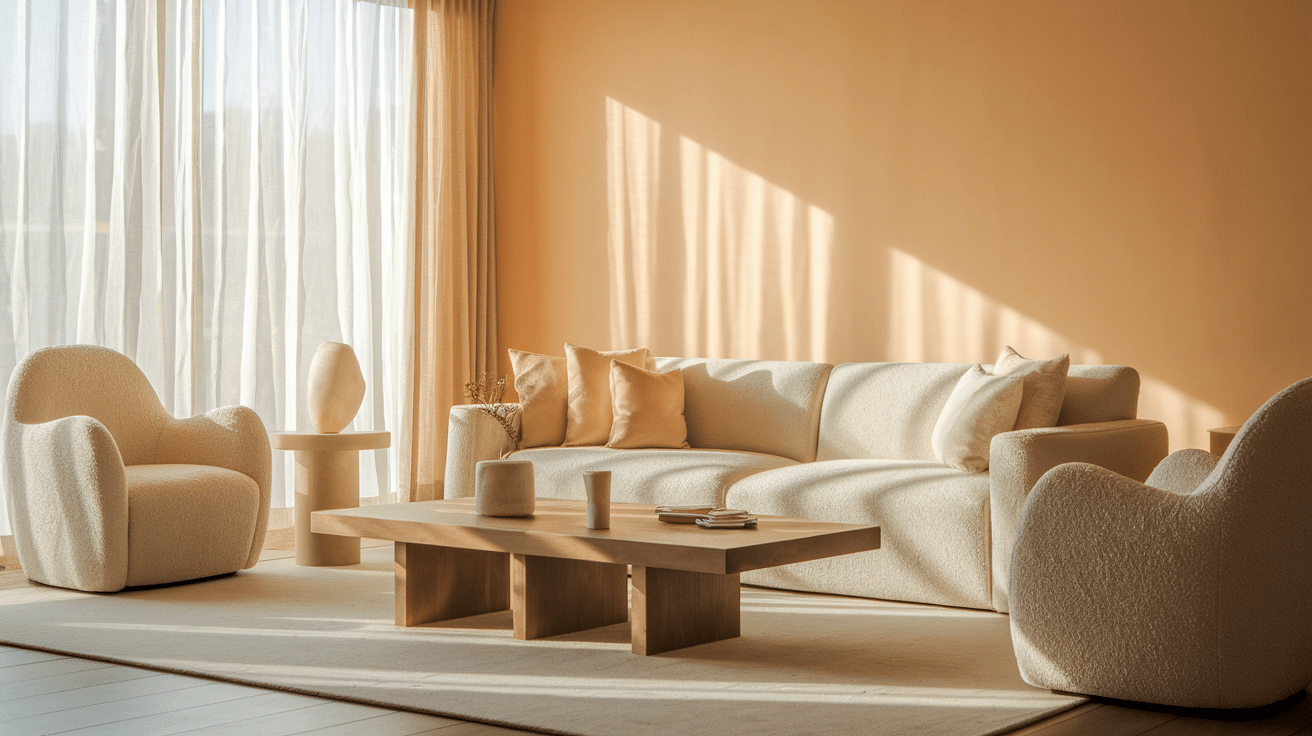Are you looking for ways to make your home feel “put together” instead of random? Unity in interior design is the key. It’s what makes a room feel complete rather than like a collection of furniture.
Creating unity doesn’t mean making everything match perfectly. It’s about finding a balance where all the pieces work well together.
Colors that complement each other, furniture with similar styles, and textures that create flow – these are the building blocks of a unified room.
When you walk into a space with good unity, you might not notice what makes it work, but you’ll feel it. It just feels right.
The good news? You don’t need to be a design expert to create this feeling in your home. With a few simple tricks, you can change any room into a cohesive space that truly feels like you.
Why Unity and Harmony Matter in Interior Design
Unity and harmony in a room do more than make things look nice. They create a space that feels calm and makes sense to anyone who enters. When each piece works with the others, your brain doesn’t have to work hard to process what you see.
A unified room helps you move through it more easily. Furniture placed with purpose creates natural paths and simplifies daily tasks. You won’t bump into oddly placed tables or feel crowded by mismatched pieces.
From a visual standpoint, unity gives your eyes a place to rest. It reduces the chaos that comes from too many styles competing for attention. This harmony interior designers strive for isn’t just about aesthetics.
When you get unity right, your space feels welcoming and comfortable. It becomes a place where you and your guests actually want to spend time.
Key Principles to Achieve Unity in Interior Design
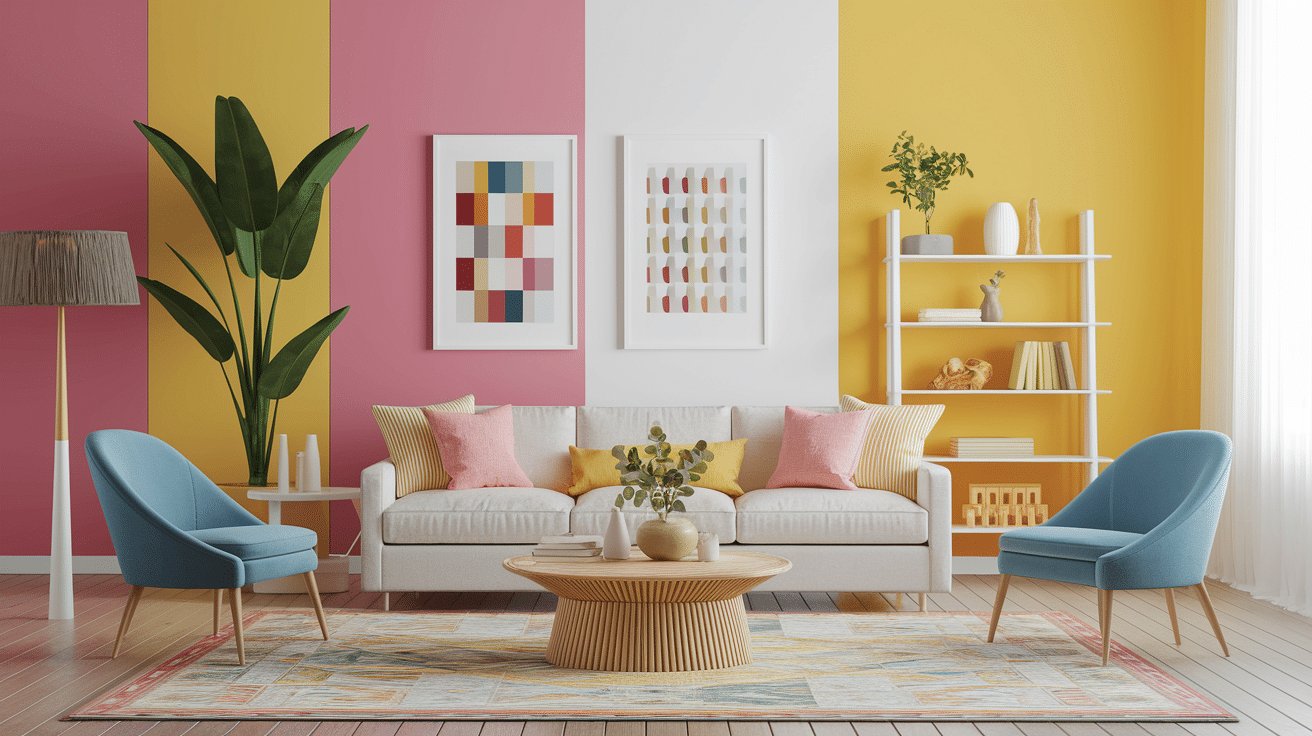
Colors tell a story in your home. Pick a palette and stick with it. You don’t need just one color. Choose shades that work well together.
Think of a sunset. Oranges, pinks, and purples blend naturally. Your home can work this way, too. These principles form the foundation of design unity.
Here’s how to bring these principles to life:
- Consistent color flow – Pick 3-4 main colors for your entire space
- 60-30-10 rule – Main color: 60%. Secondary color: 30%. Accent color: 10%
- Connect rooms with color – Use at least one color in every room
Balancing Contrast with Complementary Elements
Contrast adds interest, but too much creates chaos. Find a middle ground. Pair dark floors with lighter walls. Add a bold chair to a neutral room.
Each contrast should have a purpose. Balance is key. A few dramatic pieces work better than many.
Creating Flow Through Layout and Spatial Organization
Rooms should guide movement. Arrange furniture to create clear paths. Keep 3 feet for walkways. Group furniture for conversation. Align items with walls when possible.
Consider sight lines from doorways. Each room should flow into the next. Think of your home as one connected space. This cohesion between spaces is essential for achieving unity.
Using Materials and Textures That Work Well Together
Textures add depth. Mix smooth with rough. Pair soft fabrics with hard surfaces. Limit yourself to 3-4 main textures per room. Wood warms up metal.
Glass lightens heavy furniture. Natural materials often work well together. Each texture should appear at least twice in a room, creating subtle links throughout the space.
Furniture, Textures, and Accessories for Balanced Design
The items you choose make or break your design. The right pieces create harmony, while the wrong ones cause discord. Let’s examine how to select each element.
Choosing Furniture That Aligns with the Design Theme
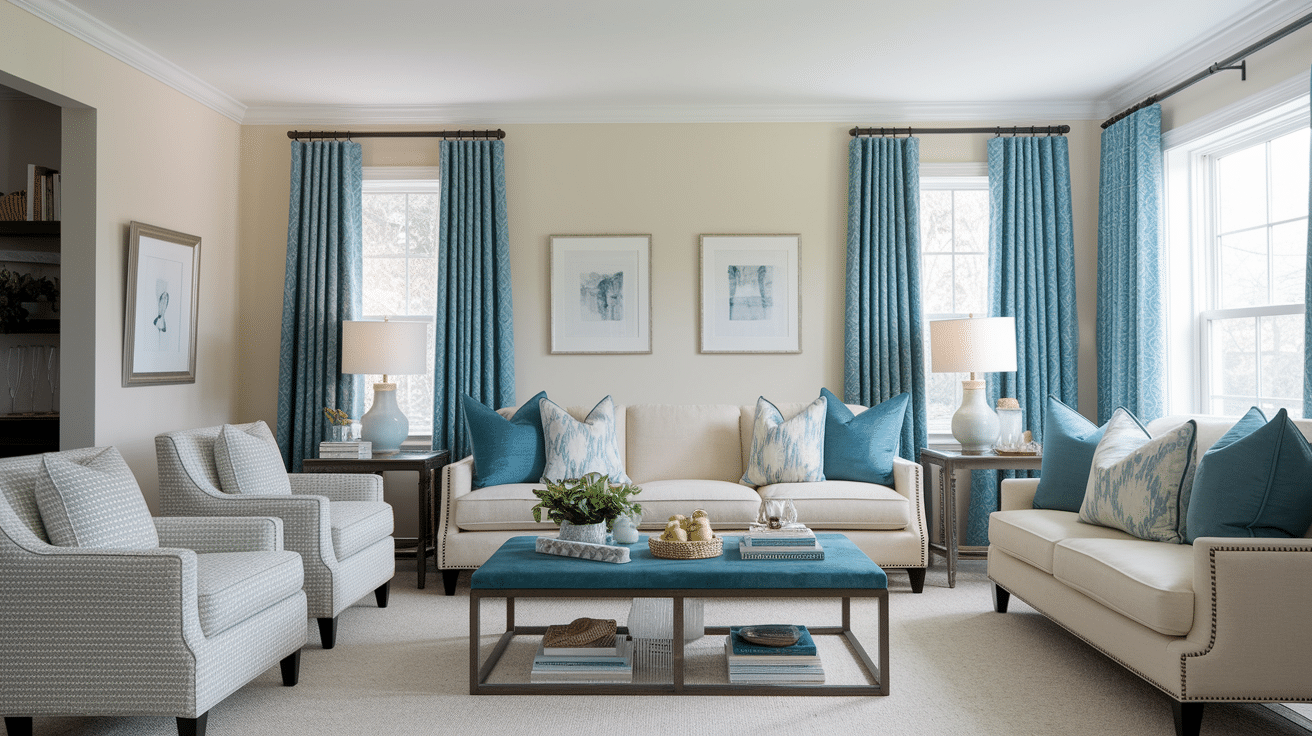
Select pieces that support your main design style. This creates a solid foundation for your space.
- Scale matters – Furniture should fit your room size, not overwhelm it
- Consistent lines – Curved or straight edges should echo throughout pieces
- Functional grouping – Pieces should work together for daily activities
- Quality over quantity – Fewer well-chosen items look better than many mismatched pieces
Look beyond individual beauty to how pieces interact. A stunning chair that fights with everything else becomes an eyesore. Think of furniture as family members – they should share some DNA while maintaining individual character. The goal is conversation between pieces, not competition.
Mixing Textures and Patterns Thoughtfully
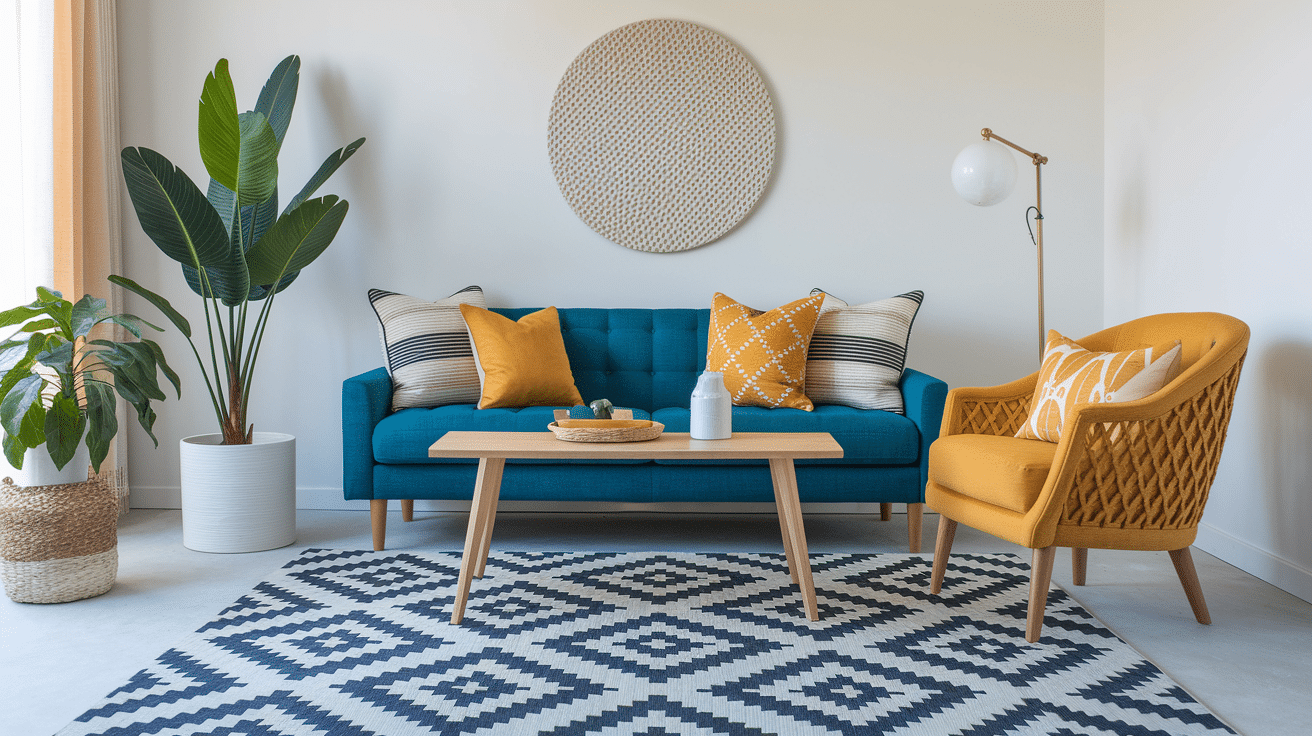
Textures add depth and interest to rooms. They make spaces feel complete and rich.
- Rule of three – Limit yourself to three main textures for balance
- Contrast is key – Pair rough with smooth, matte with glossy
- Pattern scale – Use large patterns on large pieces, small patterns on small items
- Visual weight – Heavy textures ground a space, light textures make it feel airy
Touch matters as much as sight in a well-designed room. Run your hand across surfaces – the story they tell should be consistent yet interesting. A room with only hard surfaces feels cold; only soft feels formless. The perfect balance creates spaces that satisfy all senses.
Selecting Accessories That Complement the Space in Your Room
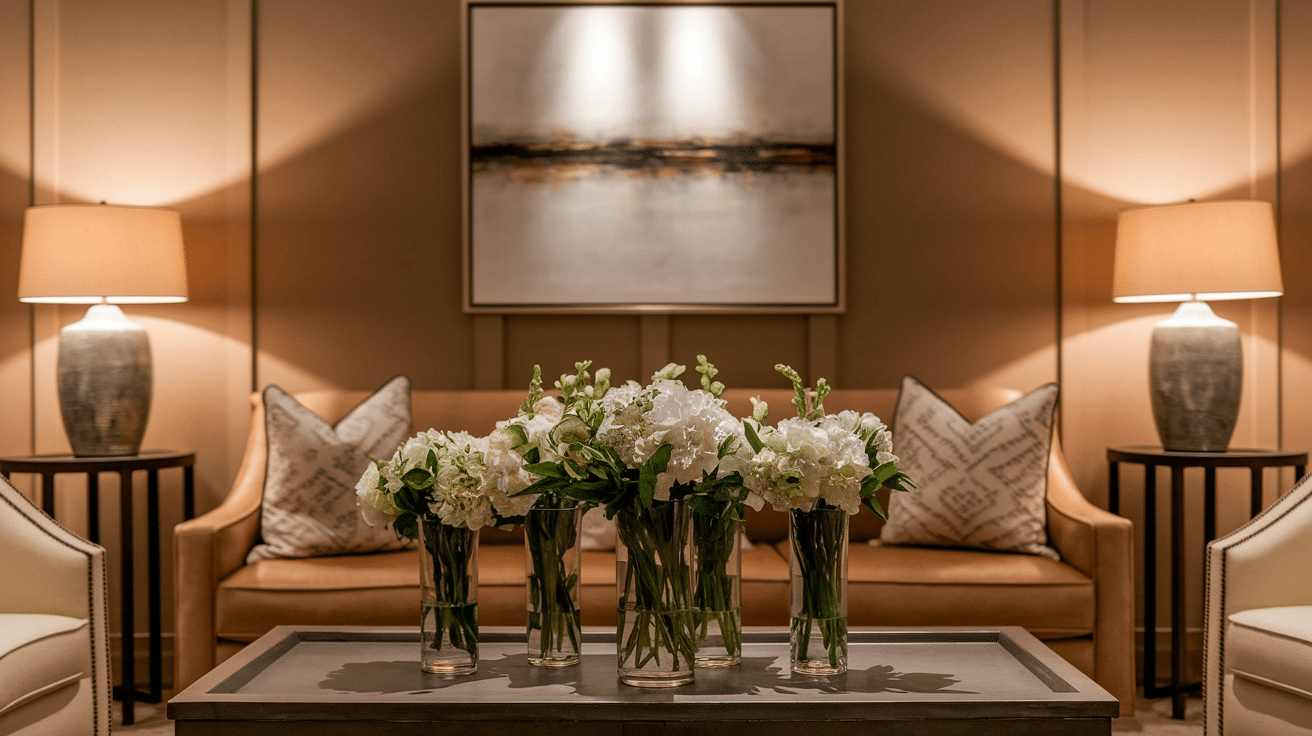
Accessories are the final touch. They add personality but should never dominate.
- Purposeful placement – Each item should have a reason to be there
- Odd numbers – Group items in threes or fives for visual interest
- Varied heights – Create visual movement with different levels
- Color connection – Accessories should pull from your main color scheme
- Negative space – Leave empty areas for the eye to rest
The best accessories feel discovered rather than placed. They draw the eye naturally around the room, creating moments of delight while reinforcing your theme. When done right, they’re the difference between a designed space and a lived-in home that tells your unique story. This is where interior designers truly showcase their understanding of design harmony.
Lighting and Color Schemes for Unity and Harmony
How you illuminate a space and select colors creates the backbone of a unified design. These elements set the stage for everything else in your room.
Lighting That Creates Cohesion
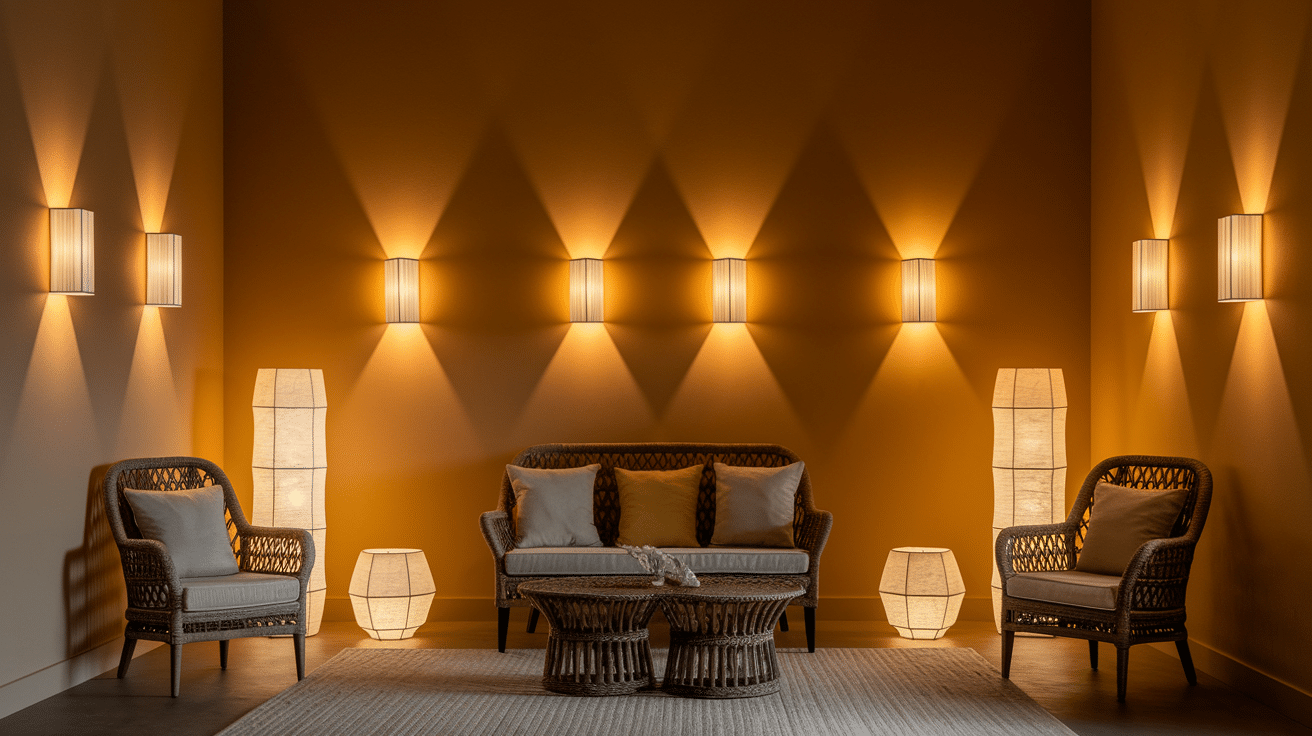
Strategic lighting brings your design choices into focus and establishes mood.
- Install wall sconces to eliminate harsh shadows and add warmth
- Consider pendant lights in odd-numbered groups for visual rhythm
- Position floor lamps near seating to create intimate conversation areas
- Use picture lights to highlight artwork and create focal points
- Install under-cabinet lighting in kitchens for both function and ambiance
- Try rope lighting in coves or crown molding for a subtle glow
- Consider how light reflects off surfaces like mirrors and metallic finishes
Light quality matters as much as fixture style. Poor lighting can make even well-designed spaces feel unwelcoming or disjointed, while thoughtful lighting elevates ordinary rooms. The right lighting helps create that cohesion image you’ve been envisioning.
Color Schemes That Build Harmony
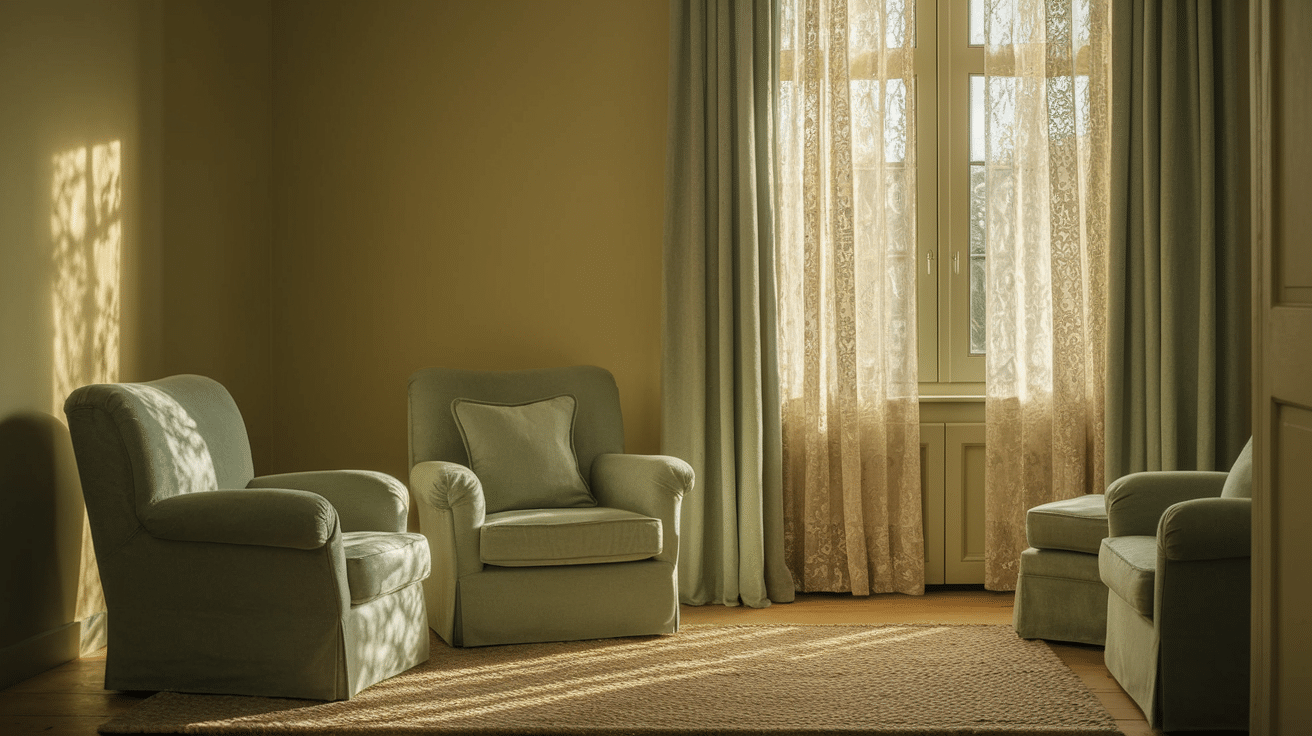
Colors create the foundation of unity through emotional and visual connections.
- Try monochromatic schemes using different shades of one color for a subtle touch.
- Explore complementary colors (opposite on color wheel) for energetic space.s
- Consider analogous colors (next to each other on the color wheel) for serene rooms.
- Use color blocking to define zones in open floor plans
- Paint inside bookcases or cabinets with accent colors for unexpected pops
- Apply darker colors to ground the space and lighter ones to expand it
- Create depth by using various sheens of the same color (matte, eggshell, semigloss)
The relationship between colors matters more than the specific hues. When colors speak the same language, they create a sense of intention that pulls diverse elements together. This harmony unity relationship is what makes harmonious interiors feel so inviting.
Common Mistakes to Avoid for a Harmonious Design
Even pros make mistakes sometimes while creating unity in design. Learn to spot these problems.
Too many bold items create chaos. Not everything can be special. Pick one standout piece and let others support it. A bright sofa needs simple chairs, and strong patterns need quiet neighbors.
Size matters in design. Big rooms need bigger furniture, and small spaces need proper scale. That tiny table looks odd with your large sofa. Measure first. Visual memory often fails us.
Mixing styles can go wrong quickly. Pick one main style and stick with it. Modern and farmhouse can work together, but tropical and industrial rarely do. Good architecture and thoughtful interiors need unity design to truly shine.
Finding common elements when mixing similar woods helps. Matching metals connect pieces. Repeated colors create unity.
Creating Unity that Brings Joy to Your Design
Unity in interior design isn’t about strict rules. It’s about creating spaces that feel right. Focus on making choices that work together instead of fighting each other. True unity interior design happens when every element feels intentional.
Remember these key points:
- Choose a color scheme and stick with it
- Select furniture with similar lines and styles
- Keep textures balanced and complementary
- Use light to enhance your design choices
A unified space brings calm to daily life and makes your home feel like a retreat from the outside world. The best part? You don’t need a design degree to achieve it. Creating harmonious spaces is about understanding basic principles and trusting your instincts.
What one change could you make today to bring more unity to your favorite room? Share your before-and-after photos in the comments!

